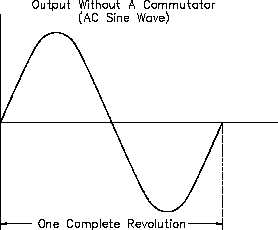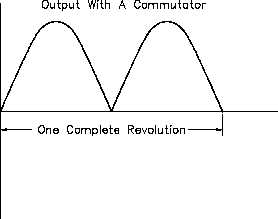DC EQUIPMENT TERMINOLGY
DC Generators
In a DC generator, commutation provides for the conversion of AC to a DC output that is
Figure 1 AC to DC Conversion with a Commutator
generated in the armature windings. Commutation will be discussed in greater detail in
subsequent chapters.
Summary
DC equipment terms are summarized below.
DC Equipment Terminology Summary
Terminal voltage, as applied to DC generators, is defined as the voltage that can
be measured at the output of the generator.
Counter-electromotive force (CEMF) is defined as the induced voltage that acts
to counter the applied voltage in a DC motor or a DC generator.
Applied voltage is defined as the voltage that is delivered across the load.
Commutation is the positioning of the DC generator brushes so that the
commutator segments change brushes at the same time the armature current
changes direction.
In a DC generator, commutation provides for the conversion of AC to a DC
output that is generated in the armature windings.
ES-05
Page 2
Rev. 0




